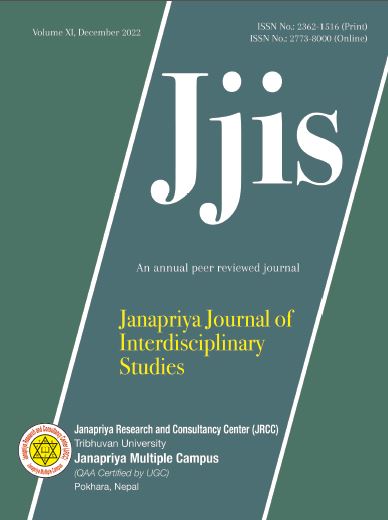Methicillin-Resistant Staphyloccocus aureus Contamination in Hospital Door Handles of Pokhara, Nepal
DOI:
https://doi.org/10.3126/jjis.v11i1.51641Keywords:
Contaminants, disinfection, door handles, hospital, MRSA, pathogenAbstract
The presence of contaminants on the door handles surfaces of hospitals may be a common means of transfer of potentially pathogenic bacteria among users and can act as vehicles of diseases transmission. The aim of this study was to isolate, identify and evaluate the presence of bacterial contaminants and Methicillin Resistant Staphylococci (MRSA) with their antimicrobial susceptibility pattern present on the door handles of selected hospitals of Pokhara Metropolitan City, Western Nepal to take the necessary remedial measures. Isolation, identification and antimicrobial susceptibility test of bacteria were done using standard microbiological procedures. Further screening and confirmation of MRSA were done according to Clinical Laboratory Standard Institutes (CLSI) guidelines. Out of the 100 swab samples cultured, 96 (96%) showed bacterial growth. 62.86% (88/140) of the isolates were found to be Gram positive. Percentage distribution of the isolates showed that the most prevalent Gram-positive bacteria identified was Staphylococcus aureus (43.18%), followed by Coagulase negative Staphylococci (15.91%), Bacillus spp (11.36%), Diptheroides (10.23%) but considerable number of Micrococci (7.95%), Streptococcus pneumoniae (6.82%), Enterococci (4.55%). Prevalence of MRSA in this study was 39.47%. Significant difference in antibiotic resistance pattern was found among MRSA and MSSA isolates (P<0.05) reflecting increased ability of MRSA to develop resistance against various antimicrobials. Drugs like clindamycin, cefazoline and amikacin were found quite effective against MRSA in the present study would be better options for the management of such infections. MRSA strains’ contaminating on the door handles of hospitals may cause threat of infections to patients, hospital staffs, visitors to hospitals and people in the community. Thus, regular surveillance and disinfection with appropriate agent at regular interval would minimize the settlement and transmission of various pathogens including MRSA.
Keywords: Contaminants; disinfection; door handles; hospital; MRSA; pathogen




